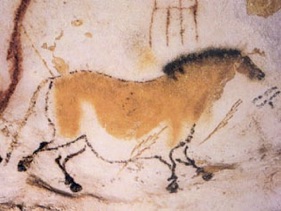Atelier Bonryu(E)
pinhole photography


Atelier Bonryu(E)
pinhole photography


Laboratory: Pinhole Photography
History of Pinhole Photography
- Paleolithic Age -

There is a theory that mankind of the paleolithic age has already known the pinhole phenomenon. I suppose it is true because even a small boy who is a lower grade schoolchild of a primary school observed the phenomenon and keeps it vivid in his memory after more than half a century. It is such an impressive phenomenon.
Some researchers are trying to prove the theory. An example of such researches is found in the web-site “Paleo-Camera” by Matt Gatton. It is the established theory that the origin of the art is the cave art or the portable art on plaquets by mankind of the paleolithic age, but as for motivation behind such arts and situation under which the paleolithic people started the arts, there are various theories and no generally accepted single conclusion has been obtained. These theories are considered to be classified into three categories, i.e., Needs (Interpreted Purpose), Ability (Mental Capacities), and Experience (Recognition). “Needs” mean the purposes to realize a large take in hunting, or to avoid disasters, and “Ability” means the Mental Capacities to accept “the art-for-art” or “the art-for-life”, which appeared with the evolution of the human brain. On the one hand “Experience” means to recognize things around, such as patterns made by bear’s craws or unintended patterns on a worked stone and to expand them to arts. Though these are not competitive but cooperative for the origin of the art, Gatton is going to clarify the situation under which the paleolithic people started the cave art or the portable art by paying attention on “Experience” among them, i.e., the pinhole phenomenon observed in daily lives of the paleolithic people.
The cave arts of Altamira in Spain and Lascaux in France are especially famous and more and more cave arts or portable arts have been found in the world. The paleolithic age spans from 2,500,000 years ago to 10,000 years ago, and the period between 35,000 and 10,000 years ago is called as the upper paleolithic age (late stone age). This period is also the later half of the Würm ice age and in this period only the modern humans were left on the Earth. The cave art and the portable art mentioned above were produced in this age. As the climate was very cold, humans began to use a tent made of animal hide or a hide curtain for their dwelling place to get away from the cold climate. Gatton considers that there were inevitably small pinholes in these animal hides and the paleolithic people experienced the pinhole phenomenon in the tent or in the cave with the hide curtain. Gatton carried out several experiments with his students to clarify that the dwelling place was dark enough so that the paleolithic people could see the pinhole phenomenon and that in such a place the picture on a plaquet obtained by tracing the pinhole-projected moving object becomes very similar to the existing paleolithic pictures.
Though it is not possible to conclude only from his researches that the origin of the paleolithic art relates directly to the pinhole phenomenon, the idea is very interesting and it might be possible that the pinhole phenomenon might have been observed in the daily life of the paleolithic people.
Altamira, Lascaux,...Cave arts: How far we can date back to trace the origin of the pinhole photography?
=>
Cave art of Lascaux
“Chinese horse”
